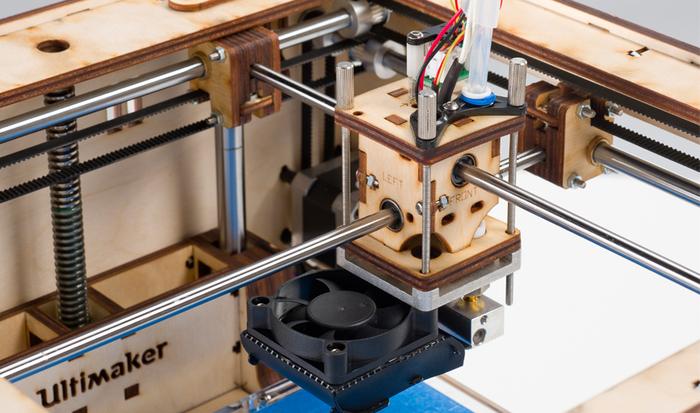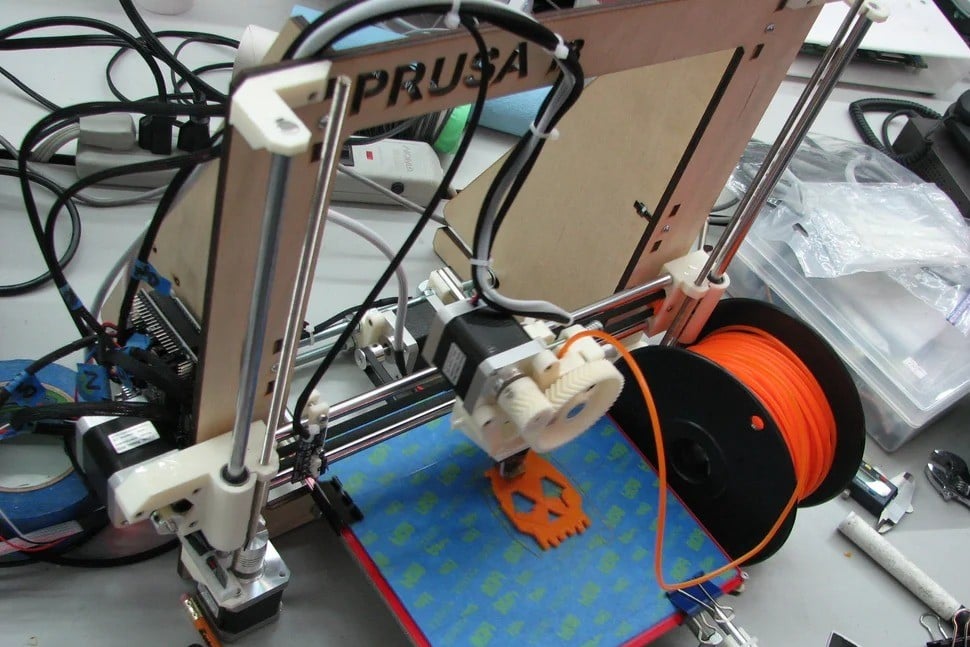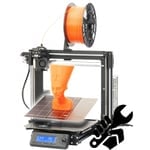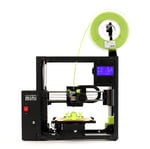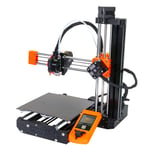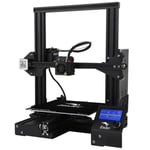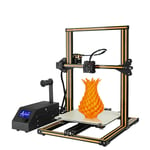The term “open source” is borrowed from software development models, where the source code is open for anyone to review, modify, enhance, and use. It’s an open design method that allows for broad co-creation, and it’s applied today to many kinds of products and initiatives.
This philosophy is especially important for the 3D printing world because, thanks to the RepRap community (who aspire to build 3D printers that can print parts for new 3D printers), we can enjoy this technology at very accessible prices.
Owning an open-source 3D printer has many benefits, but mainly it’s a guarantee that you’ll always have complete control over it. This article will cover the top open-source 3D printers that excel in performance, value, and popularity.
Why Transparency Matters
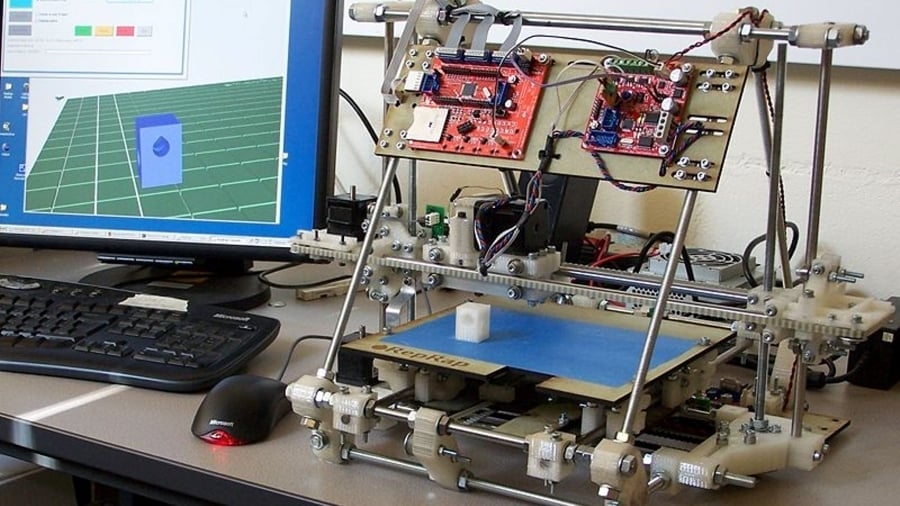
Before jumping into our selection of open-source printers, let’s take a couple of minutes to better understand the concept of open-source design and the current trends in the 3D printing market.
A Bit of History
Consumer 3D printing using the fused deposition modeling (FDM) process truly began with projects such as the RepRap initiative, an effort to design a 3D printer that could replicate most of itself, thus spreading the technology faster. The RepRap project put affordable machines in the hands of the earliest adopters, and because of the open-source nature of the designs, new iterations came swiftly and plentifully.
Fast forward to the present, the consumer FDM market has exploded into a vast ocean of machines. Some companies are even living up to the RepRap ideology by employing massive print farms that produce parts for their own production-grade products, while others have closed their doors to the public and started developing independently.
Regardless of whether you practice or agree with the open-source ideology, we’re indebted to the pioneers of the movement for promoting such powerful technology to be increasingly used by DIY makers and small businesses.
Why Open Source?
Open-source hardware and software allow your machine to keep on 3D printing regardless of what happens to the manufacturer and its support. In theory, any broken part can be reproduced once the complete design is open to everyone, or further enhanced by leveraging the community’s problem-solving abilities.
There are various open-source tools within the 3D printing world, including different types of software (e.g. printer firmware, slicer programs, 3D modeling software), hardware, and 3D printable files that can be found on community-sourced websites like Thingiverse, Printables, Cults, and MyMiniFactory.
Open Source Today
A few years back, the main discussion around open-source development focused on whether 3D printer manufacturers should release fully open-source hardware and software or adopt the open-source license model for existing products on the market.
However, we are now seeing companies that used to be at the forefront of open-source design shifting towards a more closed model, with abandoned file repositories and newer 3D printer models being launched without the complete transparency we were used to.
While the reasons for this recent trend vary, this is the reality of the current state of the open-source scene in 3D printing. This is why, for this list, we’ve made a distinction between fully open-source 3D printers and those that can be considered a bit more restrained in their transparency. Let’s get to it, then.
Fully Open Source
This category comprises the gold standard of open-source 3D printing machines. Many manufacturers claim their printers are open source, but in reality, they barely are. Both the firmware and hardware for the 3D printers in this category are broadly available to everyone, including the technical drawings for the non-printed parts.
In addition, these machines are still officially supported and sold by their manufacturers or by the projects that created them in the first place.
Original Prusa i3 MK3S+
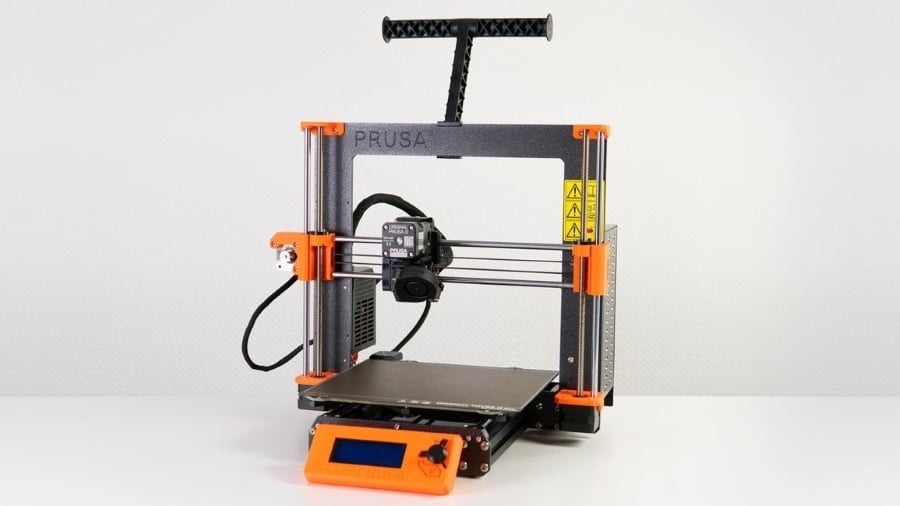
Most people know this one. The Prusa i3 models command a high level of respect in the 3D printing community and for good reason. The company, Prusa Research, started back in 2009 with the founder Josef Prusa simplifying the well-known RepRap 3D printer Mendel. Today, Prusa has an ever-growing product portfolio that includes different types of 3D printers, filaments, and the popular slicer software PrusaSlicer.
While the highly anticipated MK4 is finally available, complete documentation of its design has not yet been released. However, there’s more documentation available for the Original Prusa i3 MK3S and MK3S+, and it prints like a dream. The printer has a lot of nifty features, like the SuperPINDA leveling sensor, that make life easier, whether you’re just starting out with 3D printing or are already a seasoned user. The model also includes minor enhancements in both hardware and software.
The Prusa i3 series is one of the most open-source projects of all, with Prusa Research making all its design files publicly available. This has led to waves of clones at reduced price points, which is part of the open-source philosophy. Prusa machines run with a Marlin variation firmware, which is regularly updated and also available for anyone to use.
In short, the MK3S+ would make it onto any list of best 3D printers, open source or not.
- Technology: FDM
- Build volume: 250 x 210 x 200 mm
- Price: ~$650 (kit) or ~$890 (assembled)
- Firmware: Prusa Firmware
- Source files: Prusa Research, GitHub
Lulzbot Mini 2
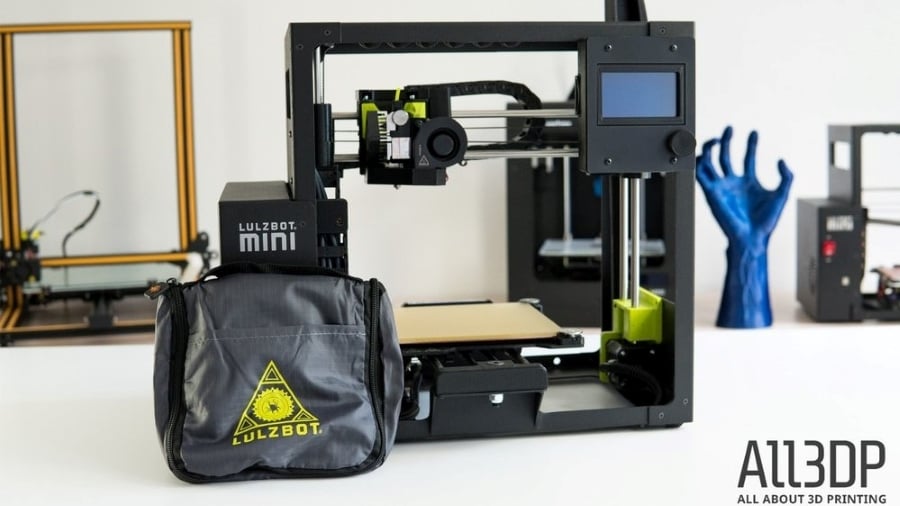
The 3D printing brand Lulzbot started in early 2011 and is now owned by an American company, Fame 3D. The Colorado-based brand has always been focused on developing open-source hardware for 3D printing. The company purchase in 2019 didn’t change that at all, as Fame 3D promises to continue the open-source legacy.
The Lulzbot Mini 2 is a reliable piece of hardware, featuring a heated bed, auto-leveling, nozzle cleaning, and even a carrying handle. It’s shipped with Marlin firmware, so tweaking and updating is a breeze. The Lulzbot Mini 2 feels premium and works spectacularly, as it should at this price point.
The company behind the Lulzbot line has always been an active contributor to the open-source community, not only making all the designs available but also supporting several well-known projects in the 3D printing world, such as Slic3r.
In all truth, the Mini 2 gets the job done, usually better than most. Supporting the noble movement in this technology’s history is a very welcome bonus.
Voron 2.4 R2
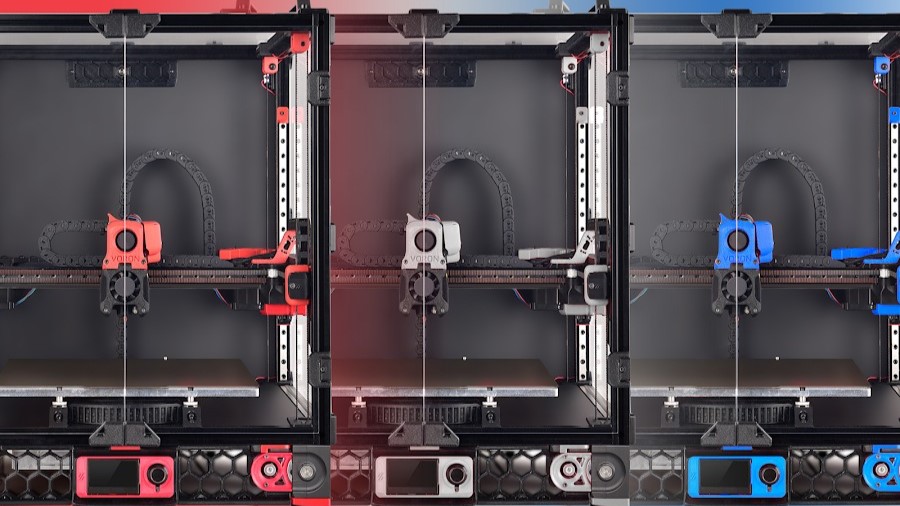
Created as an independent project to design fun and affordable 3D printers, Voron Design is now a well-known name in open-source 3D printing. The so-called “tight-knit group of engineers” has already released four different printer designs, all of which use FDM technology. One of their popular 3D printers is the Voron 2.4, which is currently in version 2.4 R2.
The 2.4 R2 is a fast 3D printer that moves using linear rails in all three axes in a CoreXY style. Many components can be 3D printed at home, while other hardware parts, like fasteners, can be purchased by following Voron’s sourcing guide. The R2 includes various fixes and updates, such as a revised Z drive module, a new rear skirt layout, an updated assembly manual, and much more.
The majority of the updates are a result of active discussions within the Voron community forum. They provide advantages over the older versions, such as improved compatibility with the BTT version of the screen, simplified Z cable chain mounts, and revised front idlers with tensioning screws. With the addition of a new mount for WAGO modules, an updated pulley jig for spacing assistance, and revised Z gantry blocks, the latest version has become more user-friendly, efficient, and easy to assemble.
The open-source files are readily available through their website and Git repository, both in STL and CAD versions. Voron goes a step further with their online Configurator tool that creates customized bills of material for personalized Voron 2.4 builds. With this configurator, you can either go for a new build or upgrade to the latest version.
On the software side, the Voron 2.4 runs on the open-source Klipper firmware and can be controlled by different web interfaces, including OctoPrint. Finally, the latest build manual is more comprehensive than the last one, reflecting the changes introduced by 2.4 R2.
- Technology: FDM
- Build volume: 250 x 250 x 250 mm, 300 x 300 x 300 mm, or 350 x 350 x 350 mm
- Price: ~$1,500 (kit) or ~$1,000 (assembled)
- Firmware: Klipper
- Source files: Voron Design, GitHub
LulzBot TAZ Workhorse

For those looking for a bigger build volume and more consistency while attaining the same premium quality and reliability of the LulzBot Mini 2, you need a workhorse. Better yet, you need the Workhorse.
The TAZ series is LulzBot’s flagship line of products, with the Workhorse being the follow-up model to the TAZ 6. As the name implies, this printer is designed for heavy-duty and everyday use. The reinforced frame makes it a pretty sturdy machine while also delivering precise movements. It uses LulzBot’s latest generation of print heads, which includes hardened steel nozzles, and it’s said to work with a wide range of materials.
The Workhouse is reliable, consistent, and easy to use. And did we mention it’s open source?
Rat Rig V-Core 3

Rat Rig is more than just a company that offers a range of products, including DIY 3D printers and CNC machines. It’s a platform that empowers makers, hobbyists, and professionals alike with open-source solutions like the V-Core 3 kit. With user feedback and product development, this kit has become an affordable DIY 3D printer.
The Rat Rig V-Core 3 kit was designed in partnership with a valued member of the online community, Pawel Kucmus. Available with a durable Core-XY structure, you can choose between three sizes, including 300 mm, 400 mm, and 500 mm. The standard kit is better suited for beginners and has pre-selected components to simplify the building process. The configurable kit is designed for experienced users who want more control over their components.
It’s worth noting that the standard kit does not come with enclosing panels. These panels are important because they help maintain a consistent temperature inside the printer, improving print quality. However, Rat Rig does offer enclosure kits that can be purchased with the configurable kit or separately. The enclosure kit is designed to fit the V-Core 3 perfectly and comes with all the necessary components for easy assembly.
Rat Rig stands out for its open-source design and extensive online community, providing makers with ample opportunities to customize and tweak the printer to their liking. Support files for different firmware choices are readily available, and the community also serves as a platform for advanced users to share mods and inspire others. Through this continuous feedback loop between users and developers, Rat Rig products evolve to meet the needs and preferences of the community.
Original Prusa MINI+
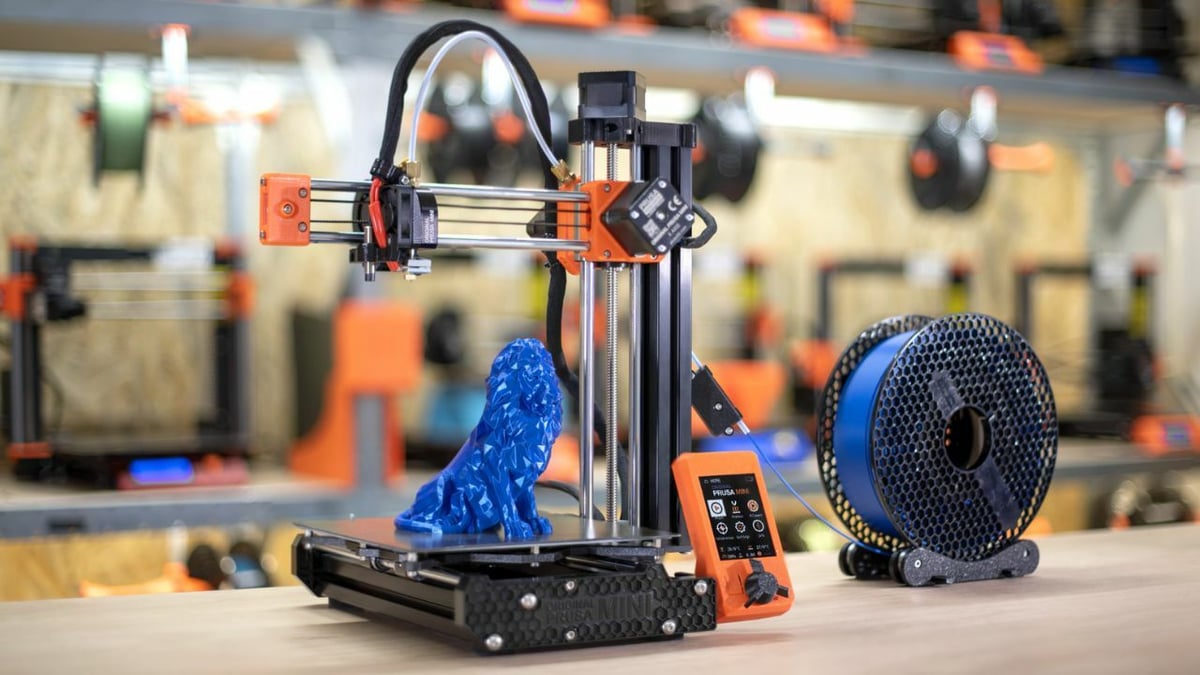
The Original Prusa Mini+ is a small yet mighty 3D printer. It inherited advanced features from the award-winning Original Prusa i3 MK2 and MK3, making it a powerful workhorse capable of meeting tough demands.
Despite its compact size, the Mini+ boasts an impressive range of features. These include a 2.8″ LCD screen, automatic bed leveling, 200+ mm/s max speed, an Ethernet port, and safety features such as thermistors. The Mini+ also incorporates the SuperPINDA bed leveling probe, which ensures the automatic bed leveling is perfect.
The Prusa Mini+ is also backed by Prusa‘s open-source design philosophy, offering users unrestricted access to everything from source codes to circuit board designs files to facilitate customization and modification. This approach has cultivated a supportive community of users and developers who contribute to ongoing updates and offer helpful resources for troubleshooting and upgrading. Additionally, the open-source nature of Prusa printers enables users to experiment and push the boundaries of what is possible with 3D printing, leading to innovative new applications.
The Mini+ has plenty of enthusiastic fans across the internet, with users praising its ease of use and advanced capabilities. Beginners will appreciate the Mini+’s user-friendly design, while experienced users can rely on its precision and accuracy. In addition, the comprehensive documentation, exemplary customer support, and 24/7 live chat function make fine-tuning and upgrading Prusa products a hassle-free experience.
- Technology: FDM
- Build volume: 180 x 180 x 180 mm
- Price: ~$450 (kit) or ~$500 (semi-assembled)
- Firmware: Prusa Firmware
- Source files: GitHub
BigFDM
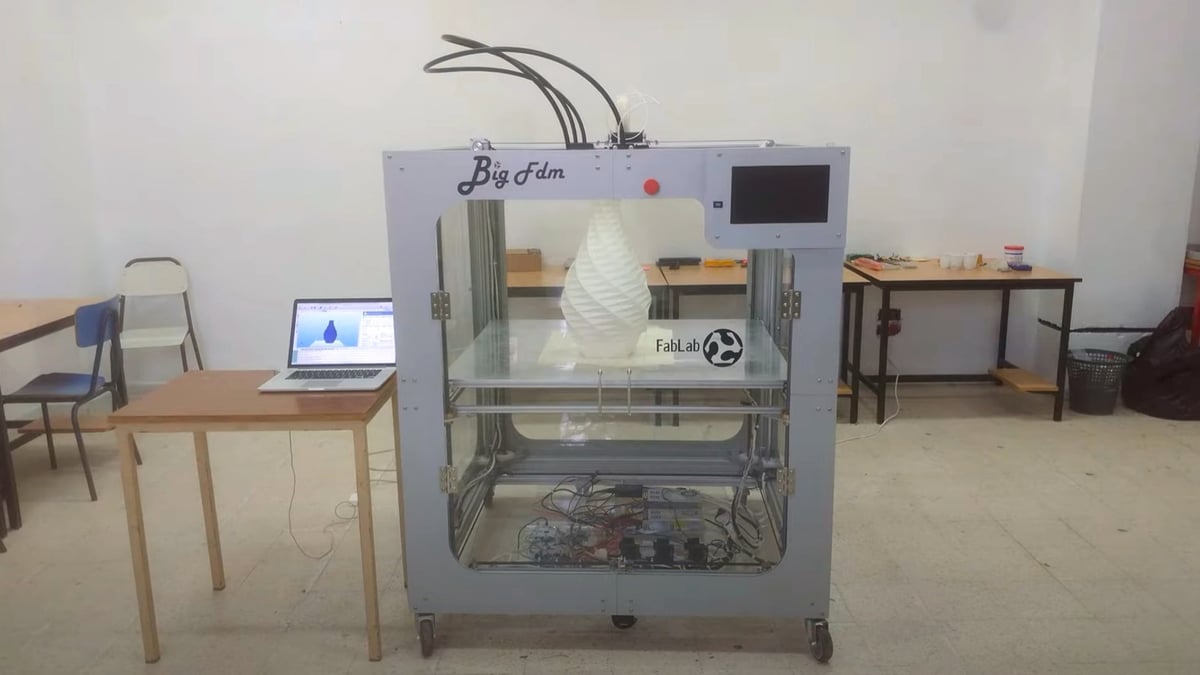
It’s probably fair to say that BigFDM is a huge-format 3D printer. Its massive build volume of 800 x 800 x 900 mm makes it one of the biggest FDM 3D printers. This printer was developed in a FabLab in Dubai by Daniele Ingrassia and Hashim Al Sakkaf in line with the open-source philosophy.
BigFDM makes use of popular components within the DIY 3D printing world, like NEMA stepper motors, GT2 timing belts, and T-slot profiles. As there’s no company behind this project, you have to source your own materials to build this printer. The tools required for building such systems, like laser cutters and wood CNC machines, are usually available in local FabLabs.
This 3D printer stands out on this list for its sheer size and complex assembly. But, like the other printers, the open-source ideology lies at its heart. All files, schematics, and plans are readily available and still maintained on the GitHub repository.
Open Source, Kinda
The machines in this category are still considered open source but have in one way or another deviated from complete and total openness.
These printers were either completely discontinued and removed from the market or have been replaced with newer and updated models that are not open source, meaning they have become outdated or lost whatever official support they previously had from their manufacturers.
However, these machines are still alive, since all their open-source files are still available while they remain popular among the 3D printing community. And this is the beauty of open-source designs.
SeeMeCNC Rostock Max v4
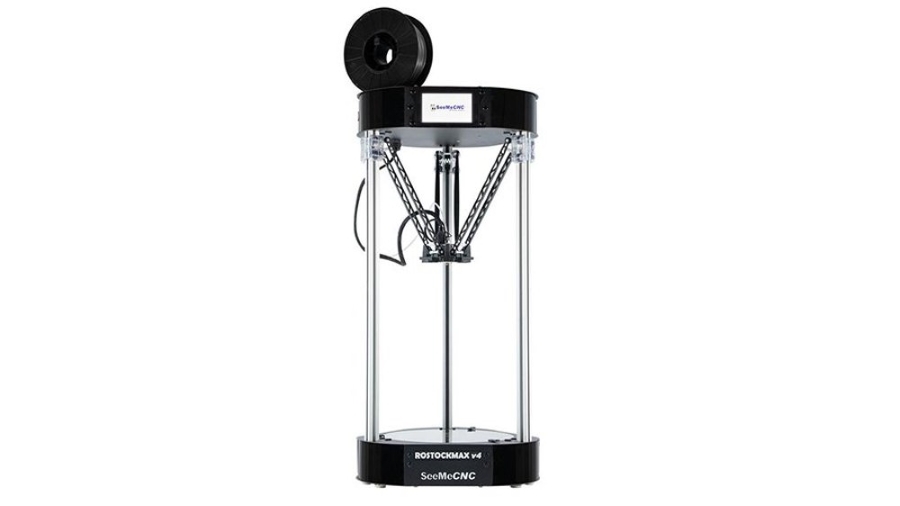
One of the main appeals of the Rostock Max v4 is its delta design, which is somewhat less common in 3D printers. Watching the printhead move around when printing can be quite mesmerizing. The three arms sliding up and down in unison seem like an almost magical operation.
The Rostock Max series was manufactured by SeeMeCNC, an American company based in Indiana, and is the all-time leader in desktop delta printers. It was based on a RepRap design from 2012 and several variations, like the Kossel.
Delta robot 3D printers are known to be hard to calibrate, but they also offer concrete benefits. The lighter Bowden print head zips around faster and easier than any Cartesian counterpart, allowing for faster and smoother printing.
The Rostock Max v4 came with a 32-bit Duet Wifi board, a touchscreen controller, and auto-leveling capabilities. It provides a large build volume, more than what is usually considered a large format for desktop printers. The Rostock Max runs a modified version of the Repetier firmware made specifically for it.
This machine, however, has been discontinued as of December 2020. Nevertheless, it remains a popular machine with a large ecosystem of upgradable parts, which is a sign of an active community. SeeMeCNC is one of the top contributors to the open-source slicer software, Slic3r, and their other printers, such as the BossDelta 300, are also completely open source.
- Technology: FDM
- Build volume: Ø290 x 385 mm
- Price: Not available for purchase
- Firmware: Modified Repetier firmware
- Source files: GitHub
Creality Ender 3

The Ender 3 is arguably one of the most popular 3D printers out there. It’s manufactured by the Chinese company Creality and is delivered around the globe at competitive prices. Creality was founded in 2014 and to date boasts a huge product portfolio with various types of printers.
To start with, the Ender 3 comes pre-assembled, requiring only a few easy steps for completion. It uses V-slot wheels in aluminum profiles for linear movement, providing smooth yet precise operation. It also features a BuildTak-like build plate and power recovery mode capabilities with the official firmware. Basically, the Ender 3 delivers on print quality and overall performance.
The original Ender 3 ships with an older modified version of Marlin since it uses an 8-bit board, and it’s known for featuring certain safety features like thermal runaway. Updating Ender’s firmware is not a straightforward process, but it’s nothing out of this world, either.
Creality has a turbulent history with the open-source movement: They took a long time to comply with licensing requirements. Eventually, they did comply, and the Ender 3 became the first Chinese 3D printer to be certified by the Open-Source Hardware Association (OSHWA).
While the original Ender 3 remains available for purchase, it has been overshadowed by newer models like the Ender 3 V2, the Ender 3 Max, and the Ender 3 Pro, none of which are open source.
Creality CR-10
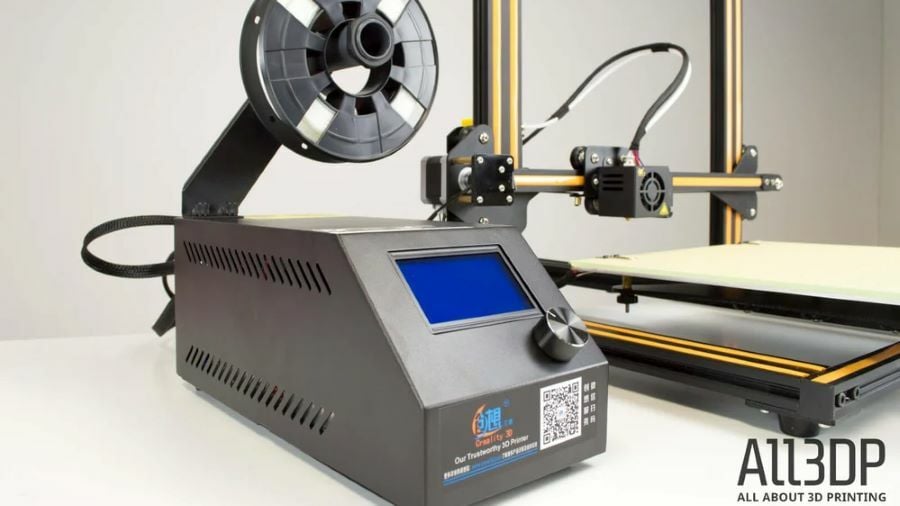
Another machine by the Chinese company, Creality’s CR-10 unleashed a flood of rave reviews when it first became available. Many praised its ability to produce flawless prints on a spacious heated bed, all for an affordable price. That’s probably why several manufacturers are reproducing the CR-10’s distinctive style.
The CR-10 allows large-format 3D printing in a relatively fast manner. Its Bowden extruder riding on aluminum rails makes for an agile print head. In addition, it’s easily assembled and has tons of printable modifications available for all tastes.
While this open-source 3D printer doesn’t have any revolutionary bells and whistles, it prints big, reliably, and at a low cost. That combination alone is convincing enough for most people to procure one.
While the CR-10 is still purchasable and the design files remain available, it has also been surpassed by newer, non-open-source models like the CR-10S, CR-10S Pro V2, and the CR-10 S5.
- Technology: FDM
- Build volume: 300 x 300 x 400 mm
- Price: ~$380
- Firmware: Modified Marlin
- Source files: GitHub
UltiMaker 3
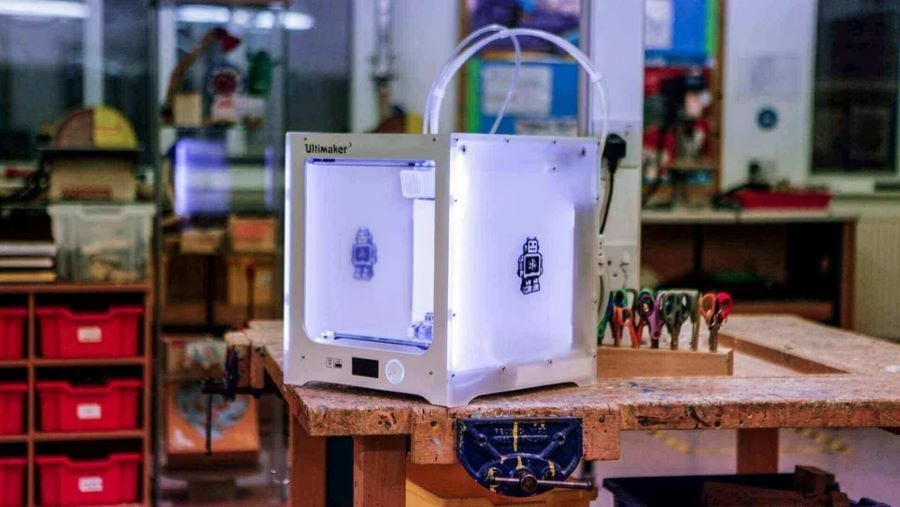
Yes, we know, UltiMaker makes sleek, awesome-looking 3D printers with modern features. But many don’t know that the Dutch company used to share its 3D printers’ hardware designs with the public. UltiMaker released its first printer in 2011 under the Creative Commons BY-NC license, allowing the copying, redistribution, and adaptation of its design in any medium or format.
As for the UltiMaker 3, make no mistake: For all intents and purposes, this open-source 3D printer performs as reliably as possible while delivering high-quality prints. You get the same smooth extrusion system and quality construction the company is known for and with dual extrusion capabilities.
The hardware files for the UltiMaker 3 were released one year after the printer’s official launch in 2017. UltiMaker has also contributes to the open-source movement, as they’re responsible for one of the most popular slicers available, Cura.
However, its current portfolio of 3D printers, which includes the UltiMaker S3 and S5, is not open source – at least not yet. The UltiMaker 3 is no longer for sale but is kept alive by the user community on the internet. The firmware for this printer is proprietary and can’t be tinkered with, so users are still somewhat tied to the company’s support.
- Technology: FDM
- Build volume: 215 x 215 x 200 mm
- Price: Not available for purchase
- Firmware: UltiMaker 3 firmware
- Source files: GitHub
BCN3D Sigmax R19
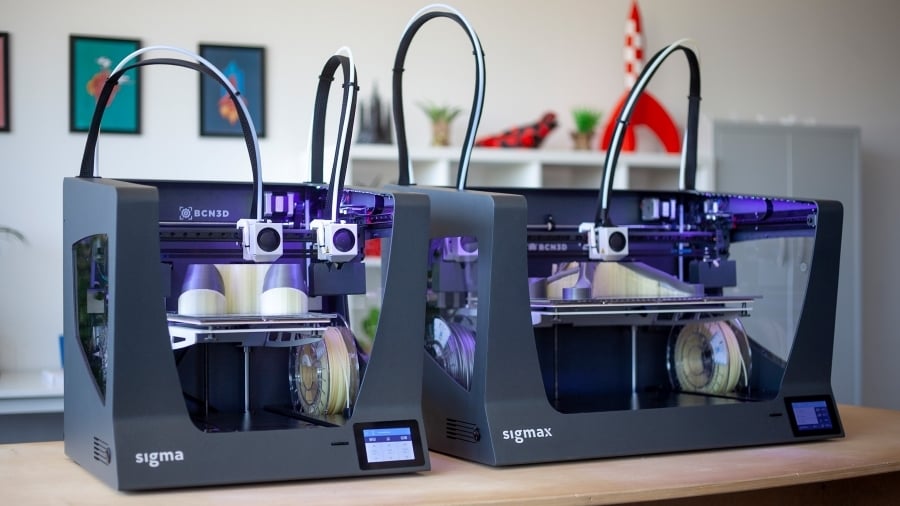
Released in late 2017, the Sigmax R19 was BCN3D’s offering to a so-called professional FDM 3D printing environment. BCN3D started as a division of Fundació CIM, a Spanish non-profit organization that had been exploring 3D printing since the 90s.
The RepRapBCN project started in 2011 to finally release its first dual extruder printer design, the BCN3D+. While not as successful as expected, it paved the way for BCN3D’s next 3D printer, the Sigmax.
This machine has a tough aluminum frame and a huge build volume. All that room doesn’t go to waste, though, because the company’s signature Independent Dual Extruder System (IDEX) provides simultaneous printing in two different modes. And there’s more: Bondtech extruders, swappable nozzles for easy material changing, and a modified version of Cura.
All of these features were part of the company’s effort to create an open-source 3D printer geared towards professionals, and back then, they were not shy about sharing their designs. In 2019, the company spun off from the non-profit organization to become a standalone company specializing in producing 3D printers.
Nowadays, BCN3D Technologies’ newer releases, like the high-end Epsilon Series and the Sigma D25, can’t be considered open source, and even though the Sigmax R19 has been discontinued, all its design files and firmware remain available.
Prusa SL1

The Original Prusa SL1 was the first LCD-based resin 3D printer to be released by the Czech company. Instead of developing it from scratch, Prusa Research acquired another 3D printing company, called Futur3D, which had been working with LCD technology for some years.
According to Prusa’s founder, the SL1 was envisioned “to be the MK3 of the resin world” rather than compete with other established printers on the market. For the SL1, the company focused on print quality and ease of use, and we confirmed that that’s the case.
The SL1 had a 5.5″ 2K LCD screen with an XY resolution of around 0.047 mm, known to deliver highly detailed prints. The SL1 series is compatible with third-party resins, conforming with the open-source mindset, and should perform just the same.
The manual fill indicator and the built-in sensor for resin levels are some of the unique features of the SL1, which runs a proprietary Prusa firmware that can be upgraded directly in the machine via an internet connection.
The SL1 was replaced by the newer SL1S, which (according to Prusa Research) offers better print quality and a significantly larger print area besides faster printing capabilities. While the SL1S is still a closed design, all design files and software for the SL1 are still available.
- Technology: LCD-based resin 3D printing
- Build volume: 120 × 68 × 150 mm
- Price: Not available for purchase
- Firmware: Prusa Firmware
- Source files: Prusa Research, GitHub
License: The text of "Open-Source Printers: 2023 Buyer’s Guide" by All3DP is licensed under a Creative Commons Attribution 4.0 International License.
CERTAIN CONTENT THAT APPEARS ON THIS SITE COMES FROM AMAZON. THIS CONTENT IS PROVIDED ‘AS IS’ AND IS SUBJECT TO CHANGE OR REMOVAL AT ANY TIME.

